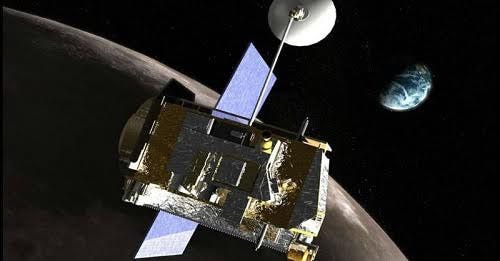Lunar eclipse threatens NASA satellites
A super lunar eclipse next Sunday could threaten one of NASA's most important exploration instruments.
 |
| LRO simulation. Photo: NASA |
According to The Independent, when the Earth covers the Sun, causing the Moon to fall into darkness on September 27, we will both admire the beautiful total lunar eclipse and witness the supermoon phenomenon, also known as the blood moon. But this is also a difficult time for the Lunar Reconnaissance Orbiter (LRO) of the US National Aeronautics and Space Administration (NASA). The temperature and light will drop significantly, possibly causing it to stop working.
Not all spacecraft can survive the temperature drop and lack of light during a lunar eclipse. NASA’s Lunar Atmosphere and Dust Environment Explorer (LADEE), designed to operate for 100 days during a non-eclipse cycle, was nearly disabled during the April 2014 eclipse.
LRO, on the other hand, can endure hours of low temperatures and low light. It has safely weathered three lunar eclipses in the past year and a half. On September 28, as we gaze upon the blood moon, LRO will enter a special mode, shutting down its power and going into “hibernation” to survive the cold, dark flight.
"We have a solution and it works," said Dawn Myers, a science planner at NASA's Goddard Space Flight Center. "Things are always tense when a lunar eclipse approaches, but we always follow the default procedure and have not had any problems."
LRO will restart tomorrow morning and a team of scientists will observe and monitor it for the next 24 hours to ensure it is functioning properly.
Hibernation is key to helping the satellite survive the eclipse. It's also a great time to test some of LRO's new capabilities that will help unravel the Moon's secrets. Diviner, the instrument on LRO, is a radiometer that measures energy reflected from the Moon's surface and infrared emissions that help determine surface temperature.
"Our electrical engineer has looked at previous eclipses and evaluated the feasibility of leaving this equipment on during an eclipse," Myers said. "He told us that if the voltage dropped below a certain level, we would have to shut it down, but that hasn't happened yet."
Keeping the Diviner active during a lunar eclipse will provide useful information.
"The rapid cooling of the lunar surface during the eclipse helps us understand how the highest points on the moon cool differently than on a normal moon night," said Noah Petro, another NASA scientist. "This allows us to study the grain sizes at the surface."
LRO launched on June 18, 2009, on a two-year mission. It is now in its sixth year of operation and is expected to continue operations until October 2016.
According to VnExpress






